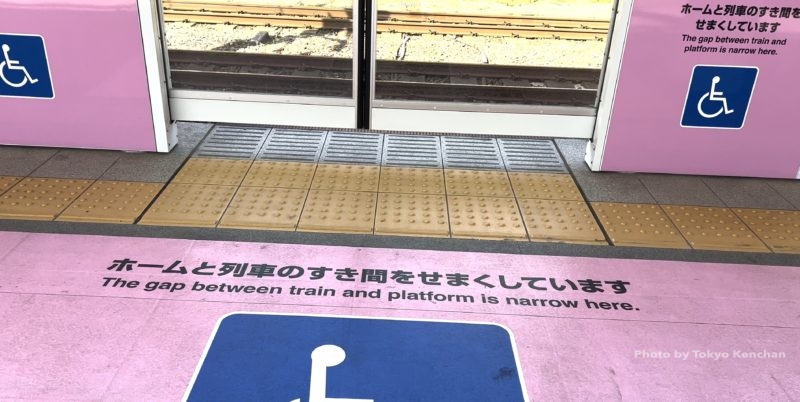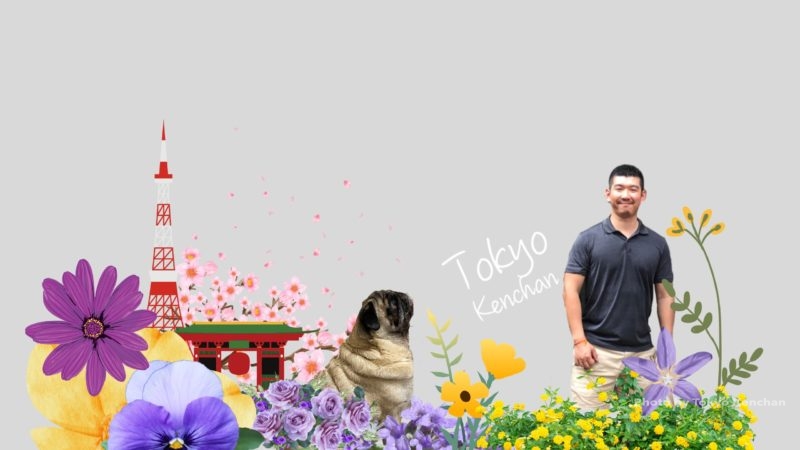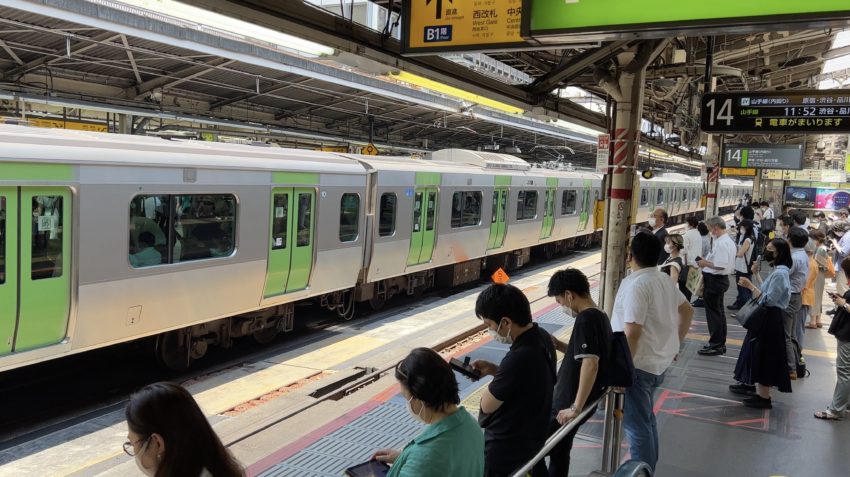- How to get around Tokyo by Trains – All explained transportation of Tokyo
- Train systems in Tokyo
- How to get Tickets of Trains in Tokyo
- IC CARD “Suica” and “Pasmo” that let you go anywhere in Tokyo
- How to find your destination in Tokyo easily
- What to be careful on train in Tokyo
- For Handicapped Users or Passengers with Less mobility
How to get around Tokyo by Trains – All explained transportation of Tokyo
Tokyo’s train system is extensive and efficient, but it’s a little confusing for the visitors since there are some different system that you don’t see in other major cities.
Today’s episode is, some basic knowledge for train systems in Tokyo for travelers.
Please also see my the videos I explained about getting on trains in Tokyo.
Train systems in Tokyo
JR
First JR is a former National Japan Railway, and runs mainly above ground or elevated lines in Tokyo. It’s specifically called JR East in Tokyo regions and East Japan area. Major short distance lines you might use is JR Yamanote Line which is colored light green, and Chuo line (Orange) , Chuo-Sobu Line (Yellow) . You might also use Saikyo Line (Green) and Keihin-Tohoku Line. (Blue) Usually, each of line has different platform and the sign of platform is all in the line’s color, so it’s easy to find. Only thing is not to take wrong direction.
JR also has long distance trains to suburbs, and the route you might use is Yokosuka Line, Tokaido line, Shonan-Shinjuku line that goes to Yokohama and Kamakura, and also Chuo Line’s long diestance train to go to Mt.Fuji or south and west Nagano region.
Subways
Another trains you might use often is subways. There are two subway companies in Tokyo, and one is Tokyo Metro – which has Ginza line, Marunouchi Line, and some other routes. Another one is Toei – which means Tokyo Government Company, and they have 4 routes. Probably you might use Asakusa line as it is part of airport express route which connects Narita and Haneda. Another line you might use is Oedo line which makes a big loop from under the Tokyo Government building in Shinjuku to all the way to downtown in the east.
If you take Metro and change to Toei, you need another fare. I’ll explain about the ticket system after finishing all the train systems in Tokyo.
Private Railways
And one more train I have to explain in Tokyo is private railways. Private railways means train route that is owned and operated by private companies. Most of them has a big terminal near JR Yamanote Line and extend their rails to suburbs. There are about 10 private railways in Tokyo, and tourists also have lots of opportunity to use them. It might be interesting to see how each line is different, as they compete to establish their original brand image so more people live on their lines.
Here are the private railways that is convenient for tourists.
- Odakyu – Odakyu’s Terminal is Shinjuku. It runs special train called “Romance Car” that mainly goes to Hakone, a famous hot-springs area.
- Tobu – Terminal is Asakusa. The only terminal that is not connected with JR Yamanote Line. They have special train called “Spacia” and “Liberty” going to Nikko and Kinugawa Hot-springs which is in 2-3 hours north of Tokyo. They are introducing new train “Spacia X” to Nikko. Tobu has another terminal in Ikebukuro to Kawagoe- which is an old town in the north west of Tokyo, so please make sure you are on the right terminal.
- Keisei – Keisei runs Skyliner that is connect Narita airport and Nippori, and Ueno Station. Since Ueno station is a little far from JR platforms, people get on and off Nippori station as the Skyliner stops right next to JR platforms.
- Keikyu – Terminal is in Shinagawa. It runs train to Haneda airport. Haneda also has Tokyo Monorail, so you can decide depends on where you go. As an experience monorail might be more fun.
- Keio – Keio’s terminal is in the underground of Shinjuku Station. It’s very much a railways that takes to Tokyo’s suburbs, but it has some tourist spots such as Mt.Takao and Tama Zoo.
Shinkansen
Shinkansen, also called bullet trains in English are services by JR and they takes you to the other parts of Japan. In Tokyo, you can get on them from Tokyo station. It uses completely different railways from other commuter trains or long distance JR trains, and there is a special gate for their platform. And again, there are two different Shinkansen company in Tokyo station.
The train going to Kyoto, Osaka and Fukuoka in the west Japan, is called Tokaido Shinkansen, and it’s owned by JR Tokai which is also called Central Japan railway. It also stops at Shinagawa station. And Shinkansen heading towards north such as Tohoku region, Hokkaido, Niigata, and Kanazawa are operated by JR East. It also stops at Ueno station. In case you use JR Pass, you can only use it for JR lines and Shinkansen trains (Except a train called Nozomi).
This article is about Tokyo, so I’d like to just talk about Tokyo trains for today.
Different Company means, different tickets
So now you know there are several different types of trains in Tokyo. Now the inconvenient truth is, each of them has different gate and different ticket system.
You need different tickets if you transfer between two companies, and that applies to the two subway companies too. Most of the case you don’t have to worry about the ticket if you have IC card which you can use for any trains of any companies in Tokyo. But the money you top up can go so quickly if you don’t know this, and you might wonder why you need to top up so often when you are not moving much distance. So I sometimes look for if there is any way to go my destination by one train company. Of course you are on travel and time is precious, so it might just better to go the fastest route.
**********
How to get Tickets of Trains in Tokyo
TICKETS

Now let’s see how you get train ticket. Find out the price on the board above the ticket machine, and purchase that price on the machine. If you see your destination is 160 Yen, click the 160 yen on the machine and put money. The small paper ticket comes out. Make sure you take the ticket when you enter the station as you need it again when you leave station.
But as you see, not many people are getting tickets for the number of passengers. Because everyone use IC card usually. If you are staying in Japan for more than a few days, I recommend you to get IC card, which makes your travel much easier.
IC CARD “Suica” and “Pasmo” that let you go anywhere in Tokyo
The IC card is a plastic card that you top up in advance, and touch it to the machine at the gate. It automatically calculate the fare, and deduct when you leave the gate.

In Tokyo, this IC card is called either Suica or Pasmo. If you buy at JR stations it’s called Suica, and if you get it at stations of all other train companies in Tokyo, it’s called Pasmo. You can get whichever you like. No matter which you get Suica or Pasmo, you can get them easily at the ticket machines in the stations. You need deposit of 500 Yen upon purchase which is about $3-$4, so in case you choose 2000 Yen on the machine, you have 1500 Yen to go.
When you leave the station gate, it shows the balance left on your card, so if it’s getting lower, you can top up in the machine again. In case you don’t have enough balance, you cannot go though the gate, but you can top up at the machine near the gate.
The great thing about IC card is you can use at any kiosk or vending machines, and also you can use them in other major cities in Japan such as Osaka or Fukuoka.

The map offered by JR east for usage of Suica in Japan.
So you don’t need to get another IC card when you use them in other cities. But you cannot use the IC card inter-different IC card regions.
If you stay in Japanese cities for a few days, it worth getting it.
How to find your destination in Tokyo easily

Even though the train map looks complicated, it’s easy to navigate yourself to your destinations.
Train schedule Apps.
There are several apps that you can type your destination and tells you exactly which train you can take and what time you would arrive.
Each station has number
All stations have each number, for example, Ginza line’s Ginza station has G09. And the announcement say “G9”. So even if you have to get off at the station with really unfamiliar name, you can just remember the station number, and count 07, 08, 09.
![]() G9 is Ginza Station of Ginza Line.
G9 is Ginza Station of Ginza Line.
Which car you should get on?
Tokyo’s train is mostly 10 cars and long, which makes a big difference of walking distance in case you transfer.
So there are a list of station on platform wall, saying which car you should get on for the certain station and destinations.
It’s especially useful as you can see where you can access to escalator and elevators. So you can move to the right door location
while you are waiting for trains and save time when you get there.
What to be careful on train in Tokyo
Busy time with suitcase
In the busy morning train, it’s almost impossible to get on train with your large suitcase. So plan your travel so that you don’t have to take the early morning trains.
Some stations in Japan doesn’t have platform doors. Stay back.
Some station doesn’t have door and train comes in with high speed. Make sure you walk in the middle of platform. Even if you think you are ok, sometimes people in a hurry or staring at smartphone can push you accidentally, or you can push someone too. You might think it’s too much to see lots of signs and rules, but that’s how these transportations can serve the massive amount of people in Tokyo.
Women Car
Morning hours, many trains set “women only car” and that is usually set to the front or back of the train. If you are a female or the group of female travelers, you can use the car. But otherwise, you want to avoid it. You don’t get into trouble, but just you have to spend awkward moment until the next station.
In busy train
In Japan, the assault to women on busy train have been serious issue. So if you are a male traveler, avoid to stand behind or near the women in the crowded train, and also try to raise your hand higher.
For Handicapped Users or Passengers with Less mobility

Platform door that is specially designed for handicapped passengers. JR Sendagaya station.
Because of the Olympic game, almost every stations in Tokyo are equipped with elevators so that you can have access from ground to the platform without using staircases.
Even if there are escalators, sometimes you can get trapped in the middle as it suddenly changes to the stair, so in case you find it difficult to use staircase, I recommend you to take some time to check the map in the station.
There is a website that you can check the accessibility of each station. It’s in English, but some results are still in Japanese. It’s a good tool to find a station map.


Comments